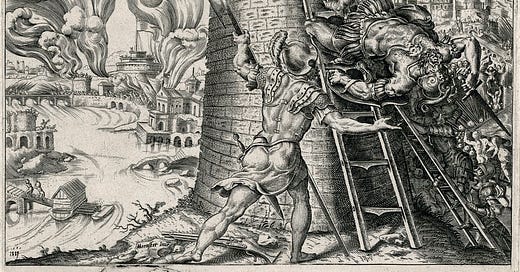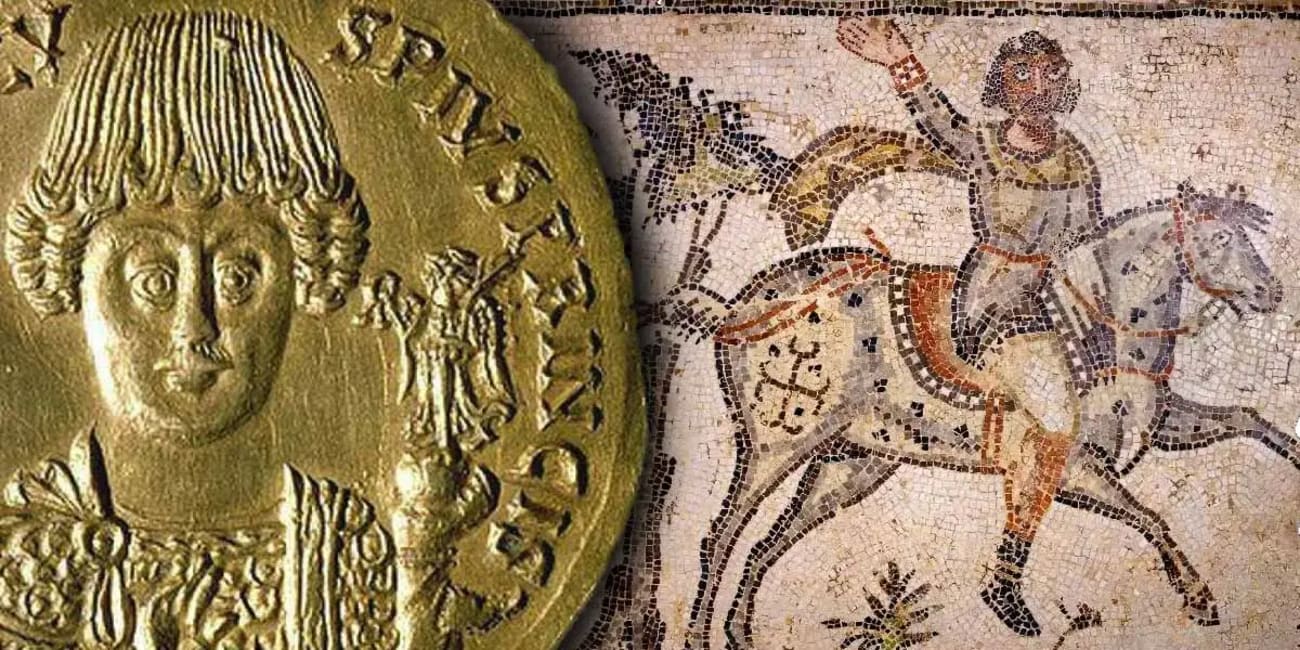Rot from within: a grand narrative on institutional and cultural decadence
Review of How Rome Fell: Death of a Superpower by Adrian Goldsworthy
This book is up to the standard we expect from Goldsworthy: combining up-to-date scholarship with lucid analyses, it also tells a great story. Though this is historical territory that I know well, this is a fresh take that is simply fun to read.
Goldsworthy starts with Marcus Aurelius, the last great Emperor of the Roman Empire's golden age. This system, the Principate, was set up by Augustus 200 years before. It was essentially a military dictatorship that maintained the appearance of the Institutions of the Republic. While supreme power rested in a single individual, it relied on the Senate to debate and ratify his decisions as well as to supply leadership in both military and administrative functions. Based around Rome, this elite group was small and hence, everyone more or less knew and understood each other, with similar education, background, and upbringing. At times amateurish, they could be relied upon to more or less keep the good of the nation – the "res publica" – in mind as they pursued their own agendas. The great flaw in this arrangement, according to Goldsworthy, was the lack of a settled institutional mechanism for succession; the emperor "named" his successor, often a member of the imperial family by birth or adoption, though with the indispensable backing of the military.
With the accession of Marcus Aurelius' natural born son, the notorious Commodus, a period of terrible instability followed. Once Commodus was assassinated, the power shifted to the military as the ultimate arbiter of who would be anointed Emperor. For the next 80 years, only a few Emperors reigned for more than 5 years before being deposed by assassination or civil war and execution. Somewhere in the Empire, it seems, the army was always acclaiming a new Emperor, who would then fight for the right of supreme leadership. It was only with the emergence of Diocletian, a strong and brilliant general, that this perpetual civil warfare became once again a rare occurrence.
It is here that Goldsworthy develops an interesting thesis. Out of an effort to shore up their strength and access new talent, the Emperors widened the scope of their leadership appointments beyond the Senate, relying on Equestrians (originally those rich enough to equip themselves with horses for their military duty). This occurred when the bureaucracy was growing to unprecedented proportions; in addition, the Empire was spread so expansively that it was broken into smaller and smaller administrative units, multiplying the need for competent administrators.
Unfortunately, these developments opened the floodgates to ambitious men who did not share the sense of common purpose that Senators supposedly did. As a result, the Emperor became more isolated, trusting no one and in constant fear of losing his power or, all too often, his life. Rather than delegate tasks, Emperors felt obligated to undertake them personally, flitting about the Empire on mission after mission. It was simply too much for one man to accomplish.
As time went on, Goldsworthy argues, things only got worse in spite of experiments in joint rule and the like. What saved the Empire was in a sense sheer momentum: it was bigger than everyone else, enjoyed access to vast resources, and faced no single power that could seriously challenge it. Nonetheless, the Empire's institutions were deteriorating from within.
In my opinion, this is a convincing argument. Many other issues are covered in the narrative, such as the rise of Christianity, the nature of the Parthian and Sassanid Empires, and the evolution of the barbarian challengers. Goldsworthy sees none of these as fundamentally different than anything that threatened Rome from its early days.
It is important to contrast this interpretation with the other great recent Fall book by Peter Heather. That book argues that the fall occurred due to converging geopolitical pressures. As the Vandals took over the wheat fields of North Africa, depriving Rome of food imports and tax revenues, Gothic barbarians (newly re-organized to resemble the Roman military) attacked an Empire weakened by a long fight with Attila the Hun. In my opinion, Goldsworthy takes these as contributing factors to the fall, but in themselves not sufficient – the weakened institutions were the principal factor, hence these simultaneous calamities were the conjunction that finally threw everything into a downward spiral. Goldsworthy does not believe they could have toppled a more functional state. For anyone seeking further intellectual adventure in this area, I would recommend Heather's masterpiece as both complementary and necessary adjunct to Goldsworthy's.
If I have a criticism of the book, it is that the argument occasionally gets lost in the narrative. However, as he doesn't state his thesis up front, it was clear to me that the institutions were what he chose to focus upon. I also find his assertion – that Senators were better attuned to the "res publica" than the Equestrians ever could be – somewhat weak. Finally, Goldsworthy has a serious bias towards moderation and skepticism – he rarely makes provocative assertions or goes out on a limb. While this stems in part from his mastery of scholarly arguments, it sometimes drains the narrative of spicy flavor.
This book is a must for any lover of history and any student of Rome. The narrative is also written with exceptional clarity, in luminous prose.
Related review:
Review of Empires and Barbarians: The Fall of Rome and the Birth of Europe by Peter Heather
From the immediate aftermath of the fall of the western Roman Empire to about 1000 CE, movements of huge ethnic groups created the ethno-linguistic patchwork that evolved into the modern-day European languages. I have always been curious about the dynamics of this process. Why did one language take hold while another didn’t? What drove the groups to mov…
Absolutely first rate historical inquiry
Heather begins with a description of the Empire as it stood about 300 CE. Rome itself had become a religious and ceremonial capital, far from the frontier, where the real political power had migrated to serve military necessity. It was a vast and integrated world, unified not just by military power, economic activity, and the most advanced administrativ…





